Philippe Coutinho’s Barcelona career did not really go as planned. In fact, not many would have guessed that it would end in ashes before it had even properly started. Just a year and a half after he joined the Catalan giant as their most expensive purchase in the history of the club, the little Brazilian magician will be heading out the exit door.
But despite his bad spell in Catalunya, Coutinho is by no means a bad player. As a matter of fact, he is still very much among the best of them but he does require a certain system to be able to showcase his true abilities. This tactical analysis scout report will aim to provide you with the Brazilian’s player profile through analysis of various tactics and statistics and determine just what kind of a player he actually is.
Philippe Coutinho Player overview
Philippe Coutinho is a 26-year-old Brazilian that is effectively a blend between a midfielder and a forward. His best-suited position is that of a number 10 but during his spell at Barcelona, he was mostly played as a left-winger.
Despite being extremely technically gifted and fantastic on the ball, Coutinho is not blessed with pace nor strength to be a capable wide man. Instead, he has the vision and the awareness to roam the final third, linking up with his teammates and shooting from range.
His passing abilities are also really good, as are his dribbling skills. As a whole, he is a wonderful player but one that needs the team to be tailored according to him and a clear system to thrive in. This tactical analysis will also try to shed some light on his past Barcelona troubles and use analysis to dissect Coutinho’s traits in more detail.
Positioning and technical prowess
Coutinho’s arguably greatest strength is his exceptional technical ability on the ball. The Brazilian can be characterised as really comfortable with the ball at his feet and possesses a great passing range as well as incredible dribbling capabilities.
This means that he is mostly best utilised as the team’s creator and distributor who attacks the final third from a deeper position with either deadly passing or by conquering space with his runs and dribbles.
Notice below how that tended to look like at Barcelona. Coutinho drops just slightly outside of the final third in order to give himself more space and time on the ball. Once he recognises a teammate’s run, he can unleash a precise long ball over the top and into the free pocket of space up front.
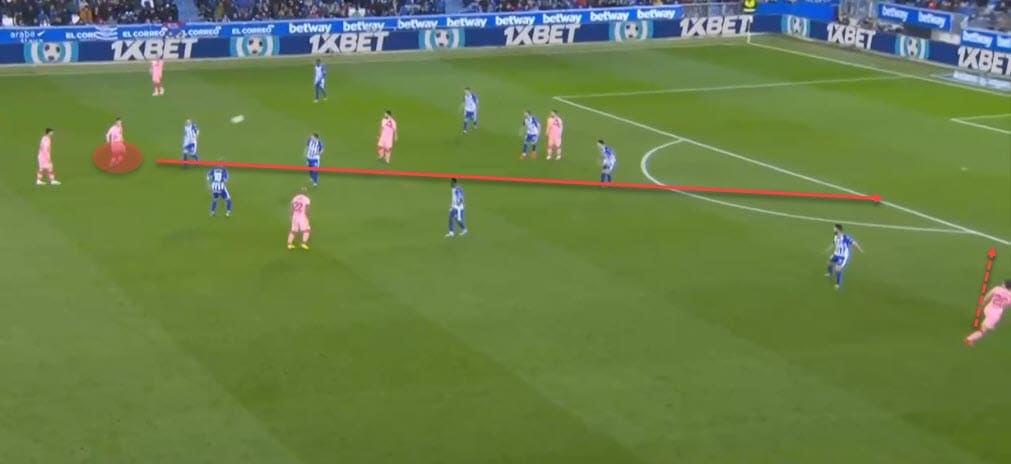
This used to be somewhat of a trademark move for the Brazilian – create space for himself and then distribute deadly passes that often break the lines. And despite his numbers actually plummeting a bit in his two seasons at Barcelona, he still averaged 1.7 through balls per game in 2018/19 and across all competitions, with 37.5% accuracy.
He also maintained 89.7% overall passing accuracy with 6.65 passes into the final third and 3.02 into the box respectively. This means that regardless of a different role at Barça, he managed to showcase some of his biggest traits.
Creativity is definitely one of those traits and Coutinho never lacks that creative spark to get out of a sticky situation as he offers an innovative solution to the problem in question. Combined with his vision, this is a powerful tool that can be used to unlock low and congested defensive blocks as well as to escape high-pressing situations. Here are a couple of examples on the pitch.
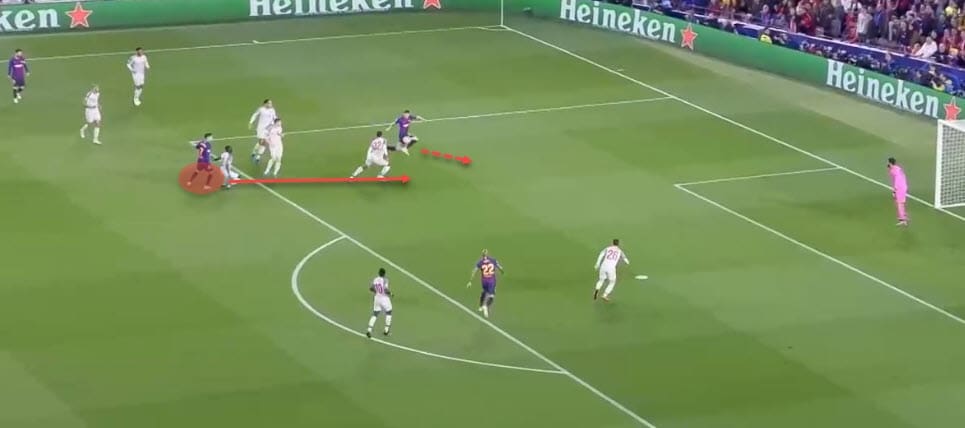
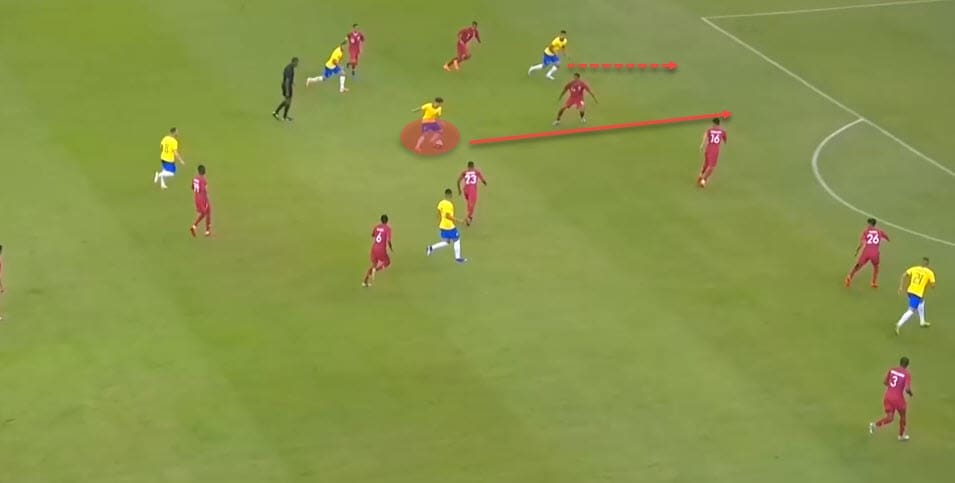
In these situations above, we can see him operate either in-between the lines or at the edge of the box but in both cases, he reacts extremely quickly and before the opposition can do the same. He only needs a moment or two to send a line-breaking ball to one of his teammates with great precision. But this is usually more evident when Coutinho has the roaming freedom to be so creative on the ball.
With Barcelona, however, he was mainly restricted to the role of a left-winger, a position he occupied in 45 games throughout last season. Mainly, he would drift into the half-space and let Jordi Alba overlap and he’d be either tasked with providing the link-up to send the Spaniard blazing into the final third or he would cut inside and dribble until an opportunity for something more arose.
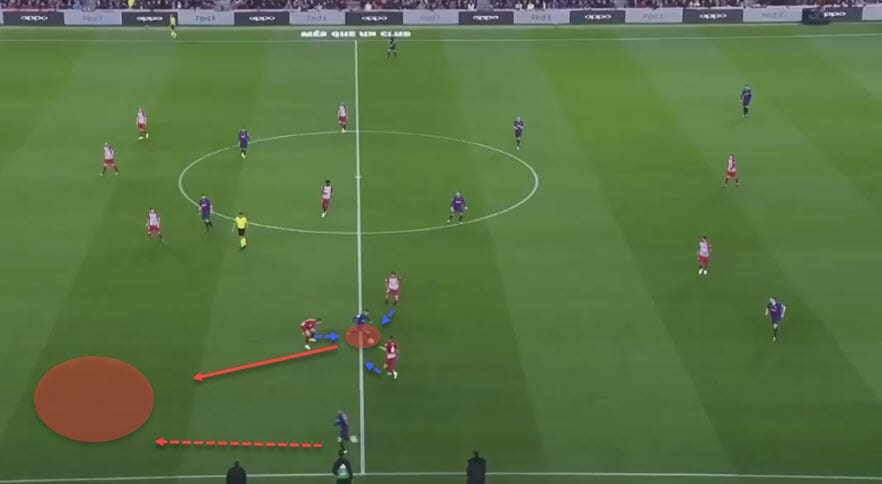
Notice in the image above how Coutinho drops deeper once again to receive the ball and is immediately collapsed upon by multiple markers. Still, he has the technical ability to keep the ball and control it in small spaces, managing to then send it past three defenders and right into the path of Alba.
This connection on the left was always crucial for Barcelona. Coutinho would drift to his right side, vacating the left flank for Alba and attacking the middle channels. The next example shows how he creates space with his movement and also sets them up with various passing channels.
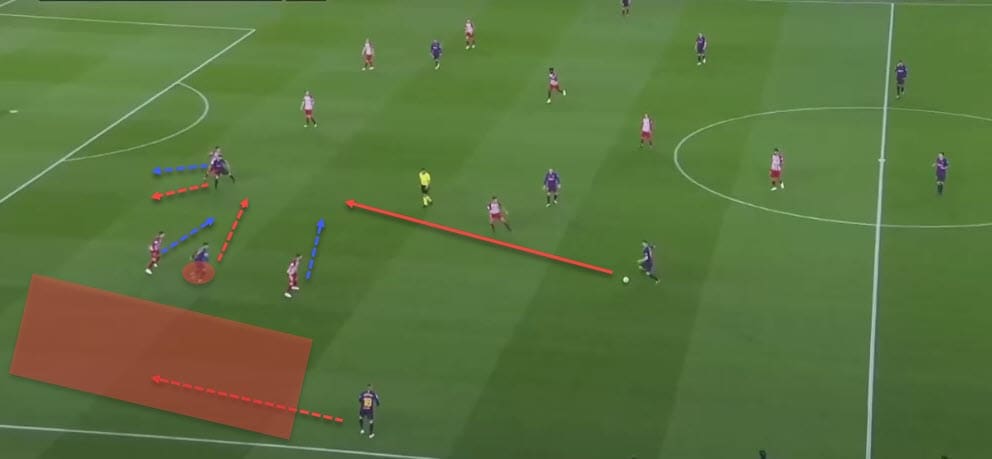
There are two things to notice which he does here: Firstly, he drags two markers away from Alba so he can run up the pitch and into the final third and secondly, he attacks the free pocket of space and offers himself as a passing option for his midfield.
This great awareness makes him a formidable forward in and around the opposition’s box as he can always create a dangerous situation out of nothing. And that also goes hand in hand with his exception dribbling abilities.
Last season, Coutinho averaged 6.13 dribbles per game across all competitions and successfully completed 51.1% of all of them. Moreover, he averaged 89.46 actions per game with a success rate of 69.2%.
When we combine that with 2.53 progressive runs and 3.48 touches inside the box, that makes for quite an impressive resume.
Finally, we have to mention his tendency to fuel the build-up as his last trait in the analysis of his technical abilities. This is more evident when he plays for his national team because he’s given more freedom and a bigger responsibility than at Barcelona. With Brazil, Coutinho will regularly drop deeper to provide the link between the defence and attack.
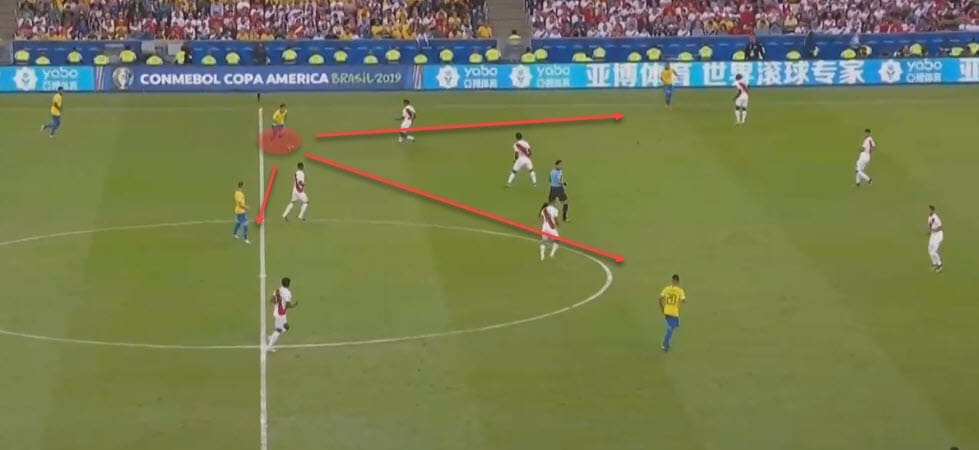

Notice above how he’s the one to start Brazil’s actions and help progress the ball into the final third. He drops to help counter the opposition’s pressing and make sure his team have the numerical superiority in order to get the ball out of their own half.
One quick look at his respective pass maps for both Brazil and Barcelona will also tell us the other part of the story. Notice how in Brazil’s case, Coutinho gravitates more towards the middle of the pitch and is used as the centre connection of the team while for Barcelona, he drifts wide and doesn’t have as big of a network established.
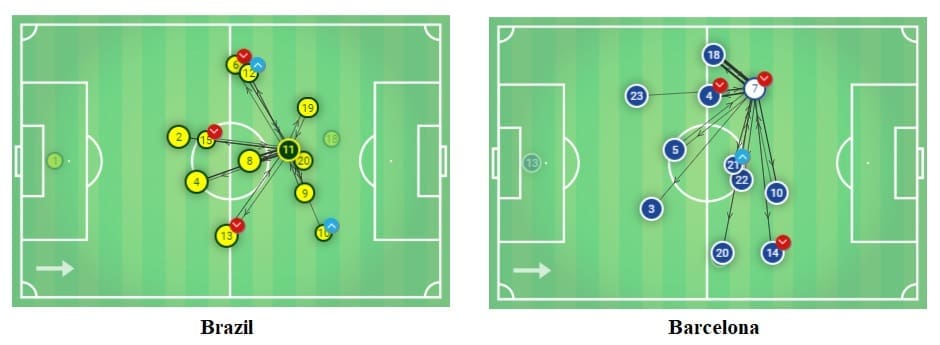
That being said, this is solely due to the difference in systems he’s being utilised it. One just happens to bring the best out of him while the other doesn’t nearly as much.
Shooting and lethality
Even though chance creation used to be one of Coutinho’s strongest traits, this aspect was somewhat diminished with his changed role at Barcelona. The Catalans’ tactics, as well as Ernesto Valverde’s vision of what the Brazilian would bring to the team, were a bit different than what most expected.
This shift in his profile turned him from an overall creative spark to a mostly long-range danger for the opposition. But shooting tendency was very much present in his Liverpool days as well.
In 2018/19, Coutinho averaged 3.02 shots per game with 41% accuracy in all competitions. Upon further inspection of his shooting tendencies, we can see that a very large number of those in his last two seasons were, in fact, shots outside the box with moderate lethality and accuracy.
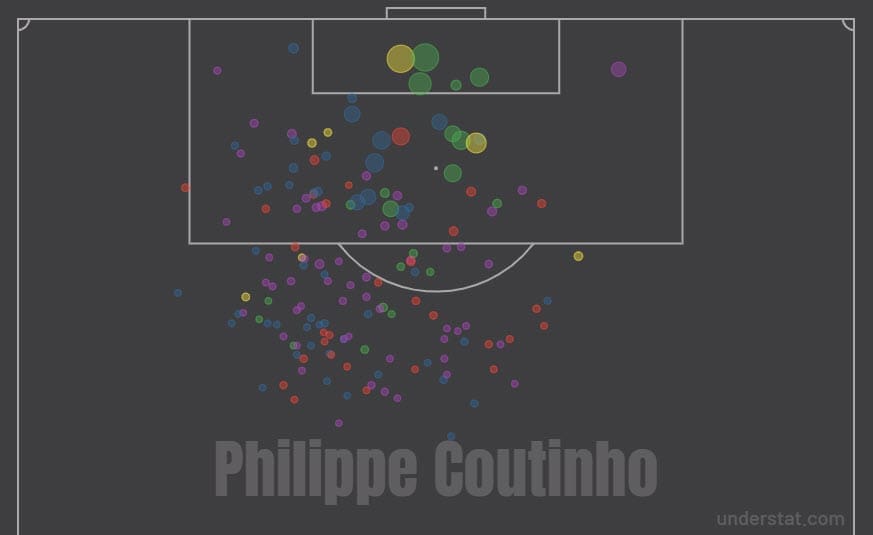
Still, he did offer quite a large sample of shots overall and was really good at converting big chances inside the box, making him a pretty lethal player to face inside your own area. We can also see that he scores almost as many goals outside the box as in it, which is pretty impressive.
Last season, however, he couldn’t’ outperform his xG (expected goals) value which stood at 7.84 while the Brazilian scored only five goals. Similarly, his xA (expected assists) were at 4.12 and he tallied only two at the end of the campaign.
Here is his statistical profile showing some of his strongest attributes.
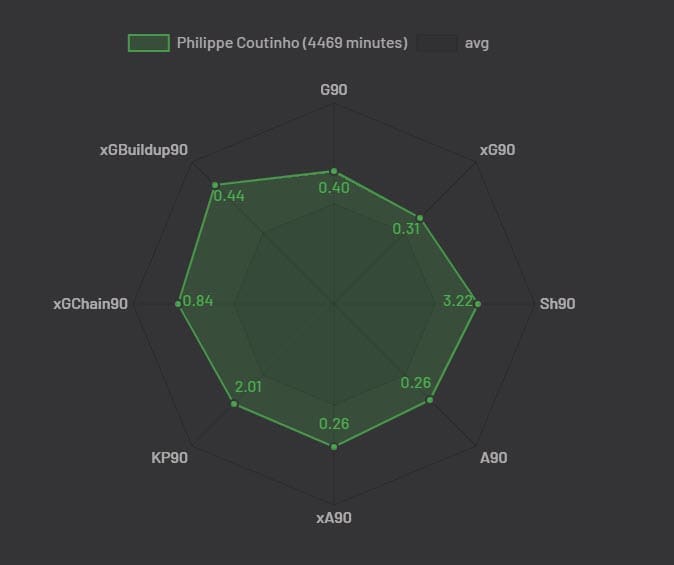
We can see that Coutinho is indeed an overall well-rounded player but his numbers are just not as extreme as one might’ve expected considering his huge price tag. In fact, when we compare his Barcelona chart to the Liverpool one from his last two seasons at Anfield, there’s hardly any difference. What really sets the Liverpool Coutinho and Barcelona Coutinho apart is the system in which he operated but that’s a story for another time.
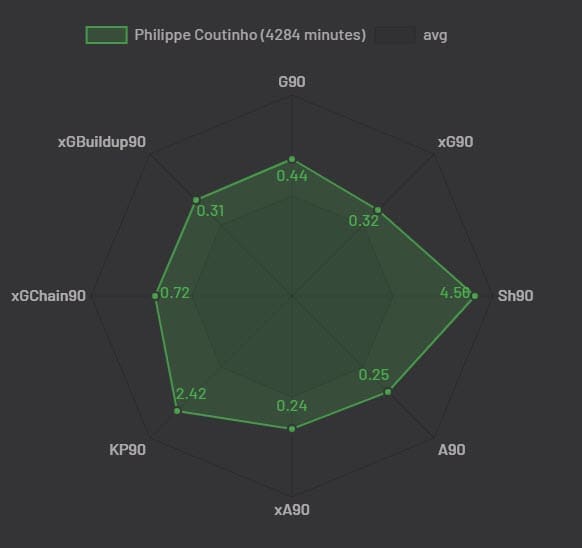
Conclusion
Even though it would be easy to conclude that Coutinho is no longer a top player in his position, the Brazilian has just been used in a system that simply doesn’t suit him to the fullest. But beneath all those issues there lies a brilliant player that definitely has a lot to offer to his new team and hopefully this tactical analysis scout report made that just a bit clearer.
Will they be able to bring the best out of him in the future? That still remains to be seen.

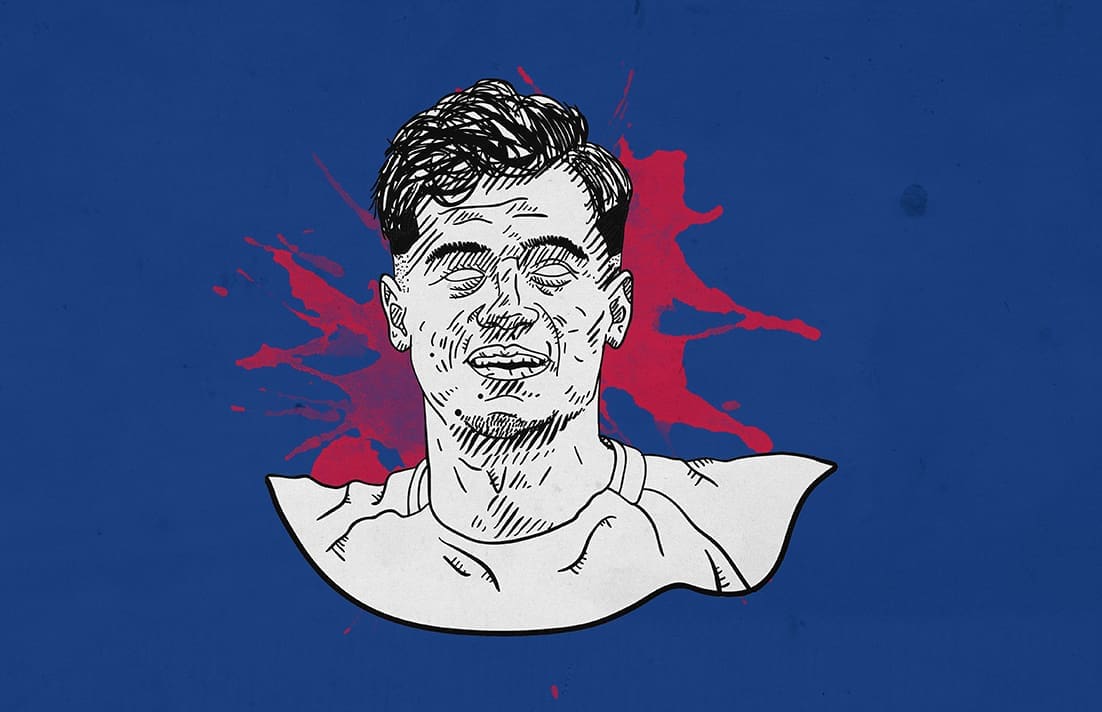



Comments